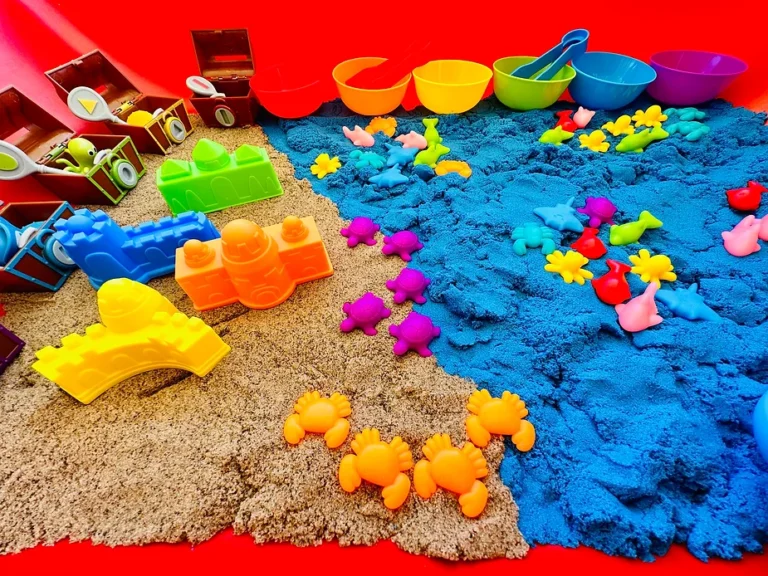How to Connect with Your Autistic Child

Learn practical ways to connect with your autistic child. This guide offers six actionable tips for creating meaningful moments and strengthening your bond—starting today!
This post may contain affiliate links and I could earn a small commission at no cost to you. However, I will never recommend anything that I do not believe in or use myself. You can read more about my disclosure policy here.
It’s estimated that around 1 in 36 children are diagnosed with autism in the United States. That’s a lot of unique brains and hearts—each with their own way of experiencing the world.
As a parent, you want to connect deeply with your child, but finding ways to truly connect can feel overwhelming, especially when they communicate or behave differently than what you expect. I get it!
But here’s the truth: you don’t need to be a perfect parent to connect and create meaningful moments with your autistic child. You just need to be there—fully, intentionally, and in a way that meets them where they are.
Sounds simple, right? It can be, and in this post, I’ll show you exactly how.
6 Ways to Connect with Your Autistic Child
1. Spend Quality Time—On Their Terms
Quality time isn’t just about scheduling a dedicated “playdate” with your child. It’s about entering their world. This means engaging with them in the activities that they love, even if they seem repetitive or unusual to you.
If your child is into lining up toys, stacking blocks, or watching the same movie on repeat, join in. Comment on their process, mirror their actions, or simply sit beside them in quiet companionship. It’s about showing them that you see and appreciate their interests without judgment.
Pro Tip: Block out just 10–15 minutes a day to join your child in an activity they love. No pressure, no agenda—just follow their lead. That short window of dedicated time can help you connect with your autistic child in a way that feels natural for both of you.
Related: What are the 5 Neurodivergent Love Languages?
2. Interact Through Physical Activity
Physical activity can be a powerful way to connect with your autistic child, especially if verbal communication is a challenge. Activities like jumping on a trampoline, swimming, or even a simple walk around the neighborhood can create shared experiences that don’t require a lot of talking.
Incorporate games that cater to their sensory preferences. For example, if they love spinning, you can turn that into a game of dancing in circles together. If they need proprioceptive input, you can do heavy work activities like pushing, pulling, or carrying objects.
These activities are great for releasing energy, but they also foster a sense of togetherness. You’re not just their caregiver—you’re their partner in these joyful moments. These physical activities offer an excellent opportunity to connect with your autistic child without relying solely on verbal communication.
Related: 100+ Of The Best One on One Activities to Do with Kids
3. Practice Self-Regulation Alongside Them
As parents, we often focus on our child’s emotions without considering our own. But being present means being aware of your own emotional state too. If you’re feeling stressed, anxious, or overwhelmed, it’s hard to fully engage with your child. Self-regulation is key.
Create a calming ritual for yourself before interacting with your child, especially during challenging moments. Maybe it’s a few deep breaths, listening to a calming song, or just taking a brief moment to center yourself. Modeling this self-regulation will not only help you connect with your autistic child, but it also teaches them how to manage their own emotions.
Pro Tip: It’s okay to narrate your feelings in a calm way when you’re with your child. Saying something like, “I’m feeling a bit overwhelmed, so I’m going to take three deep breaths to calm down,” can help your child learn by example.
Related: How to Create a Calm Down Corner for Autism
4. Practice Mindfulness Together
Mindfulness isn’t just for meditation sessions. It’s about being in the here and now with your child. Autistic children often thrive on predictability and routine, but even in those moments, there’s space for mindfulness.
Start small: during playtime or mealtime, focus solely on your child—put down your phone, resist the urge to multitask, and be fully engaged in what they’re doing. Notice the small details of how they interact with their toys or the food they’re eating. Ask yourself: What is my child trying to communicate with their actions? How can I tune in?
You can also incorporate simple mindfulness exercises that are sensory-friendly. Try deep breathing together or use a sensory tool like a stress ball or weighted blanket. Not only does this create a calming environment, but it also allows you to share a peaceful moment of connection with your autistic child.
5. Be Patient—and Let Go of Perfection
Patience is everything when it comes to being present, especially if your child’s communication or behaviors can be hard to understand. There will be frustrating moments. There will be times when your child has a meltdown, or when it seems like nothing you’re doing is “working.” That’s normal.
The goal isn’t perfection; it’s connection. When things get tough, remind yourself that you’re showing up for your child, and that’s what matters most. You don’t have to get everything “right.” Just being there, offering comfort, or giving them space if they need it, shows your child that they are loved and supported. These small actions help you connect with your autistic child even during difficult times.
6. Take Care of Yourself, Too
You can’t pour from an empty cup. As a parent, it’s easy to forget that your well-being is just as important as your child’s. Self-care is not selfish—it’s essential for being a more present, attentive parent.
Carve out time each day to do something for you, whether it’s enjoying a cup of coffee in peace, reading a book, or going for a walk. Taking care of yourself gives you the energy and mental clarity to show up more fully for your child.
Related: 20 Practical Ways To Overcome Autism Mom Burnout
Related: Ultimate Self Care Handbook for the Tired Autism Mom
Final Thoughts
Being able to connect with your autistic child isn’t about grand gestures or flawless parenting. It’s about those everyday moments where you slow down, breathe, and meet your child where they are. Each small effort adds up, and over time, you’ll notice the impact on your connection with them.
So, take a deep breath, let go of the pressure to be perfect, and focus on the joy of simply being there. You’ve got this! Remember, every step you take to connect with your autistic child helps nurture the bond that matters most.
Recommended
- What are the 5 Neurodivergent Love Languages?
- Unique Positive Traits In Autistic Children
- Positive Affirmations For Autistic Children You Need To Know
- 10 Of The Best Books About Autism for Parents
- 20 Practical Ways To Overcome Autism Mom Burnout
- Ultimate Self Care Handbook for the Tired Autism Mom






